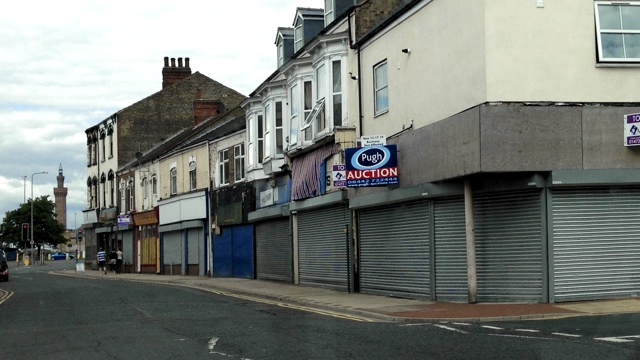It is impossible to deny that Lavender Hill is struggling, especially the eastern end as the road approaches Lambeth. Old commercial agent signs blight the buildings, it has a high vacancy rate (markedly high when compared to the traditionally very low vacancy rate in the borough) and even some of the occupied units have a high turnover of tenants who try, and fail, to make a go of it there. Some of the shops, I suspect, have been vacant so long most people would struggle to have a memory of what was there before the doors closed for the last time.
The fate of our high streets is an issue that bubbles around in the national press. Recently Martin Vander Weyer wrote an optimistic piece concluding it is too soon to write off the high street in The Telegraph. Mary Portas has been criticising the coalition government of failing our high streets. Bill Grimsey’s review for the Labour Party proposes a rebalancing, using business taxes from more affluent areas to support less affluent areas.
It is, perhaps, a typical case of calls that “something must be done,” but not much consensus, and possibly not that much will, to do what is necessary.
I remain optimistic that Lavender Hill can survive and thrive. So often it seems to be on a tipping point, with new businesses opening and starting to create a destination, only for some bad news elsewhere just to take the edge off the good. But when several excellent shops, bars and restaurants do survive, and there is an affluent demographic living in the immediate area, it’s just not plausible to say the road has no potential.
So what can be done for Lavender Hill? And that’s a question I pose, rather than one to which I think I have an answer.
I can make plenty of suggestions. Perhaps the best change would be a reform of business rates. This would make a huge difference to traders on Lavender Hill, and elsewhere, who are often crippled by a system that just doesn’t work in the modern world. Or changes to planning law, so a more dynamic framework can be put in place and the gradual creep of residential halted. But that sort of reform is probably out of the scope of a local councillor, and there are plenty of people already calling for those reforms.
However, there are plenty of things that can be done locally. Dealing with the pox of agents’ signage would change the feel of the road. I think parking can be improved, as can the general environment (just look at how different St John’s Hill feels, which has similarly wide pavements and a mix of bars, restaurants, shops and homes to Lavender Hill). It would be useful for Lavender Hill to have a stronger collective identity (everyone knows what Northcote Road is about, even if they may not like it).
Lavender Hill will, barring a U-turn, be losing council support this year or next, and I’m keen to dedicate time as a born-again ward councillor trying to support it. But what do you want to see on Lavender Hill? Is there anything that puts you off? What would attract you to the road?

